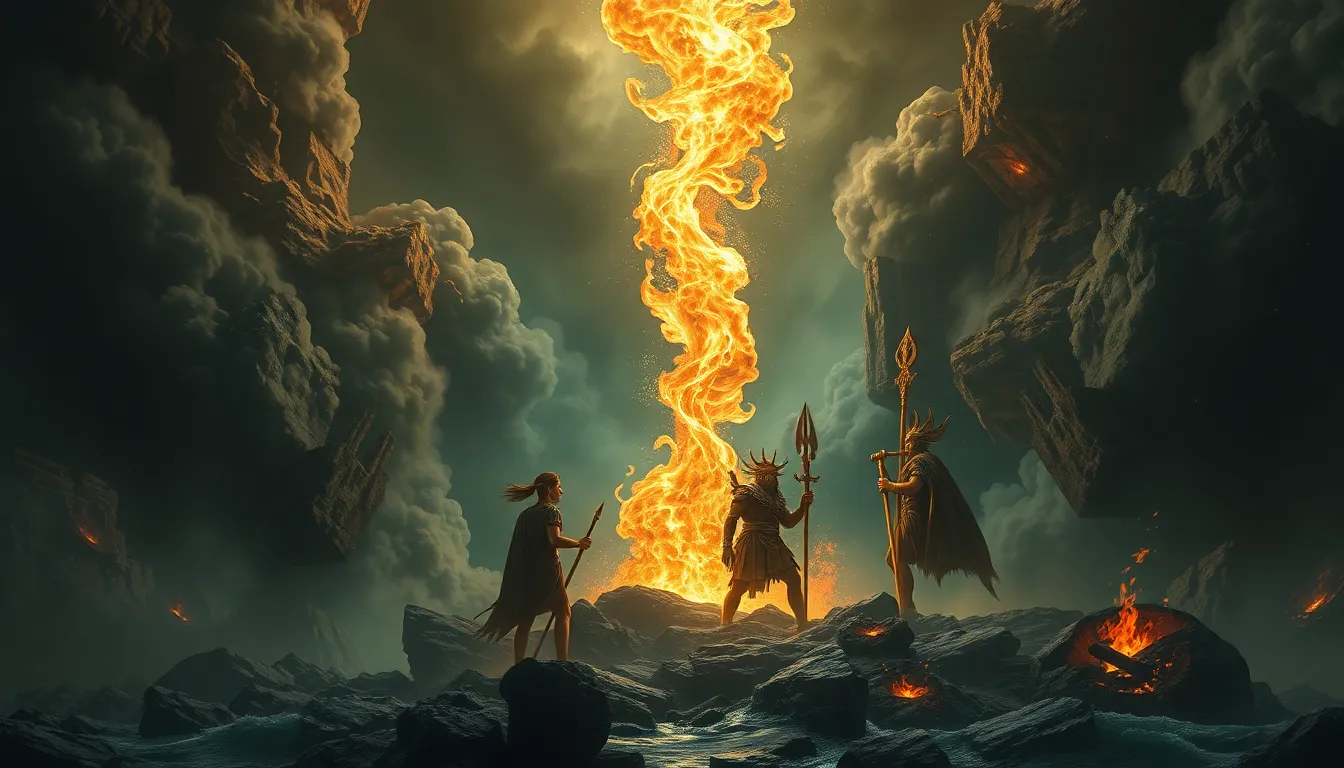The Most Eccentric End of the World Predictions in History
1. Introduction
Throughout history, humanity has been captivated by the concept of the end of the world, leading to countless predictions and theories about how and when it might occur. This fascination often stems from our desire to understand our existence and the uncertainties of life. The predictions of doomsday scenarios have varied greatly across cultures and eras, reflecting the fears and beliefs of the times. This article aims to explore some of the most eccentric and notable end-of-the-world predictions in history, examining their origins, cultural significance, and the psychological factors that contribute to these apocalyptic beliefs.
2. Ancient Prophecies: The Roots of Doomsday Predictions
In ancient civilizations, prophecies and beliefs surrounding the end of the world were often intertwined with mythology and cosmology. Various cultures developed their narratives about creation and destruction, offering insights into their worldviews.
- Mayan Calendar: The Mayans are perhaps most famously associated with doomsday predictions due to their calendar, which was believed to end on December 21, 2012. Many interpreted this as a prophecy of apocalyptic events, although scholars argue it signified a new cycle.
- Norse Ragnarok: In Norse mythology, Ragnarok represents the prophesied end of the world, marked by a great battle resulting in the death of gods, natural disasters, and the submersion of the world in water. This myth reflects the Norse understanding of fate and rebirth.
These ancient prophecies not only served as explanations for natural events but also reinforced cultural identities and collective fears, illustrating humanity’s long-standing preoccupation with the end of days.
3. Religious Revelations: Apocalypse in Sacred Texts
Apocalyptic themes are prevalent in many of the world’s major religions, often serving as a means to explain moral and ethical dilemmas faced by believers.
- Christianity: The Book of Revelation, attributed to John of Patmos, describes visions of the end times involving the final battle between good and evil and the ultimate judgment of humanity.
- Islam: Islamic eschatology includes beliefs about the Day of Judgment, where individuals will be resurrected and judged by Allah, determining their eternal fate.
- Hinduism: Hindu texts describe cycles of creation and destruction, with the current age, Kali Yuga, believed to be a time of moral decline leading up to the eventual renewal of the world.
The role of prophets and religious leaders in these narratives has been significant, shaping followers’ beliefs and behaviors throughout history.
4. The Y2K Scare: Technology and the End Times
The turn of the millennium brought with it widespread anxiety about the Y2K bug, where many feared that computer systems would fail as the year 2000 approached. This technological glitch was predicted to cause major disruptions in infrastructure, banking, and essential services.
- Panic and Preparations: As the date drew near, individuals and organizations stockpiled supplies and prepared for potential chaos, amplifying the end-of-the-world narrative.
- Reflections on Technology: The Y2K scare highlighted how technological advancements can generate apocalyptic fears, as society increasingly relies on technology for daily functioning.
Ultimately, the transition to 2000 was largely uneventful, but the incident remains a notable example of how modern fears can echo ancient apocalyptic concerns.
5. Modern Eccentric Predictions: The 2012 Phenomenon
The year 2012 saw a resurgence of apocalyptic predictions, largely attributed to the Mayan calendar’s supposed end. This prediction captured global attention and led to a myriad of theories regarding impending doom.
- Media Coverage: Extensive media coverage further fueled public interest, leading to various interpretations ranging from natural disasters to extraterrestrial interventions.
- Public Response: Many individuals engaged in survivalist preparations, illustrating how the fear of the apocalypse can influence behavior on a large scale.
The 2012 phenomenon serves as a case study in how ancient prophecies can be reinterpreted through a modern lens, drawing widespread attention and concern.
6. Conspiracy Theories: The Role of Misinformation
The internet has facilitated the rapid spread of conspiracy theories related to end-of-the-world predictions, often exacerbated by misinformation.
- Nibiru Cataclysm: This theory posits that a large planet, Nibiru, would collide with Earth, causing catastrophic events. Despite being debunked by scientists, it gained a following among conspiracy theorists.
- Planet X: Similar to Nibiru, this theory suggests that an undiscovered planet in our solar system would lead to global destruction. Social media has amplified such claims, often blurring the lines between fact and fiction.
The ease with which misinformation spreads in the digital age has significant implications for societal beliefs and fears surrounding the apocalypse.
7. Environmental and Scientific Predictions: The Coming Calamities
In recent years, scientific predictions regarding climate change and natural disasters have gained prominence, often leading to apocalyptic rhetoric.
- Climate Change: Scientists warn of rising temperatures, extreme weather events, and ecological collapse, prompting fears about the future of humanity.
- Sensationalism: Media coverage can sensationalize these predictions, leading to exaggerated fears that may not accurately reflect scientific consensus.
It is crucial to distinguish between credible scientific warnings and extreme forecasts that may contribute to a culture of fear regarding the end of the world.
8. Cultural Representations: End Times in Literature and Film
The portrayal of apocalyptic themes in literature and film has profoundly influenced public perception of end-of-the-world scenarios.
- “The Road”: Cormac McCarthy’s novel depicts a post-apocalyptic world, exploring themes of survival and the human condition.
- “Mad Max”: This film series presents a dystopian future marked by societal collapse and resource scarcity, reflecting contemporary fears of environmental degradation.
- “Children of Men”: A film that imagines a world without children, grappling with themes of hope and despair in a bleak future.
These works of fiction often serve as mirrors of societal anxieties, shaping how we conceptualize the end of the world.
9. The Psychology Behind Apocalyptic Beliefs
Understanding why people are drawn to doomsday predictions involves exploring psychological factors such as fear and existential anxiety.
- Fear of the Unknown: Humanity has an innate fear of the unknown, and apocalyptic narratives provide a framework to understand potential chaos.
- Societal Crises: During times of crisis—be it political, environmental, or social—the appeal of apocalyptic thinking can increase as people seek explanations and reassurances.
These psychological underpinnings highlight the complex interplay between societal conditions and individual beliefs, emphasizing our enduring fascination with the end of the world.



